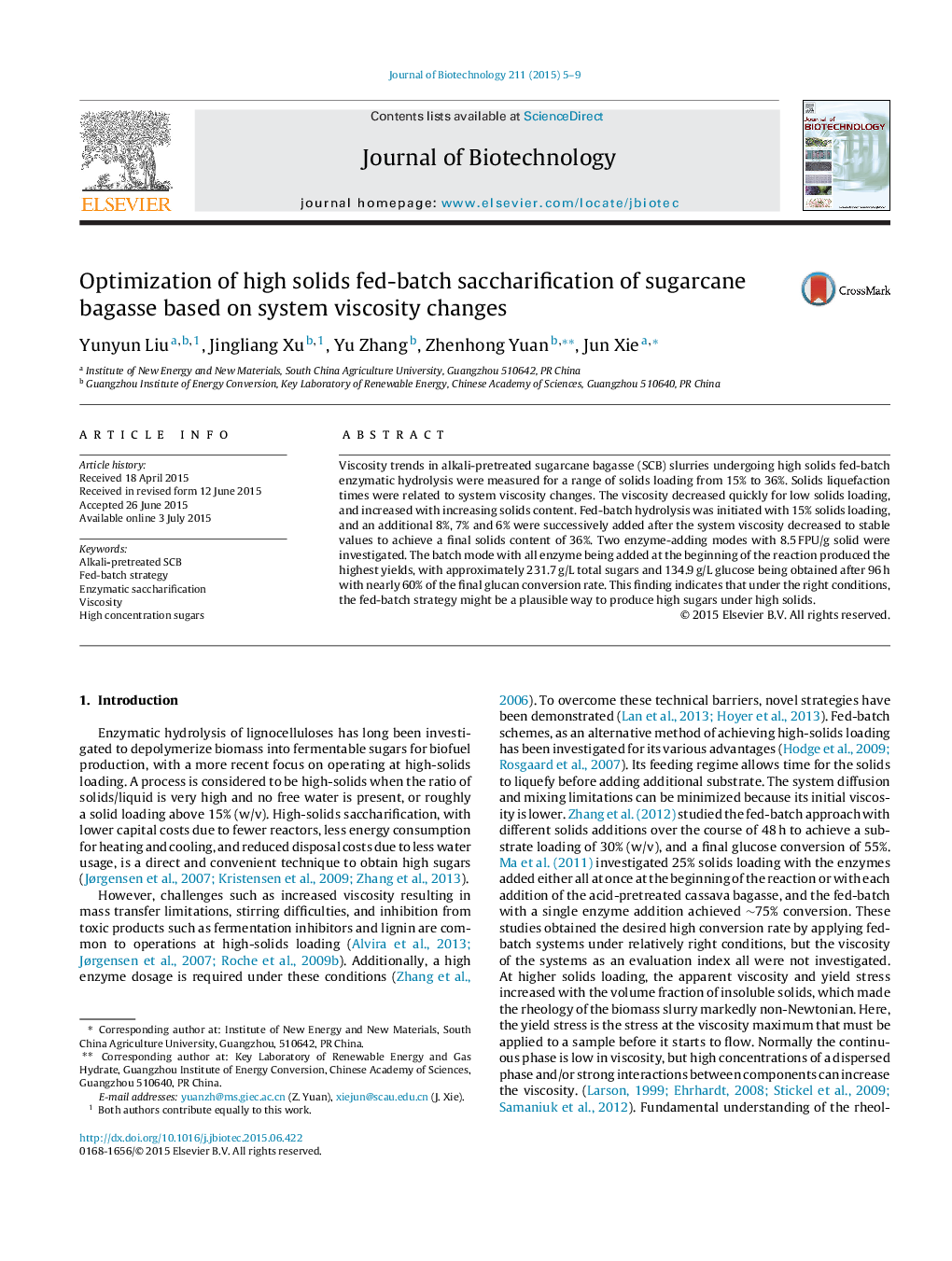| Article ID | Journal | Published Year | Pages | File Type |
|---|---|---|---|---|
| 6490966 | Journal of Biotechnology | 2015 | 5 Pages |
Abstract
Viscosity trends in alkali-pretreated sugarcane bagasse (SCB) slurries undergoing high solids fed-batch enzymatic hydrolysis were measured for a range of solids loading from 15% to 36%. Solids liquefaction times were related to system viscosity changes. The viscosity decreased quickly for low solids loading, and increased with increasing solids content. Fed-batch hydrolysis was initiated with 15% solids loading, and an additional 8%, 7% and 6% were successively added after the system viscosity decreased to stable values to achieve a final solids content of 36%. Two enzyme-adding modes with 8.5Â FPU/g solid were investigated. The batch mode with all enzyme being added at the beginning of the reaction produced the highest yields, with approximately 231.7Â g/L total sugars and 134.9Â g/L glucose being obtained after 96Â h with nearly 60% of the final glucan conversion rate. This finding indicates that under the right conditions, the fed-batch strategy might be a plausible way to produce high sugars under high solids.
Related Topics
Physical Sciences and Engineering
Chemical Engineering
Bioengineering
Authors
Yunyun Liu, Jingliang Xu, Yu Zhang, Zhenhong Yuan, Jun Xie,
